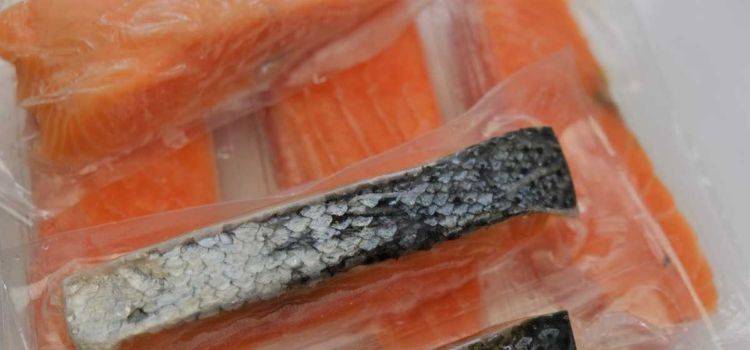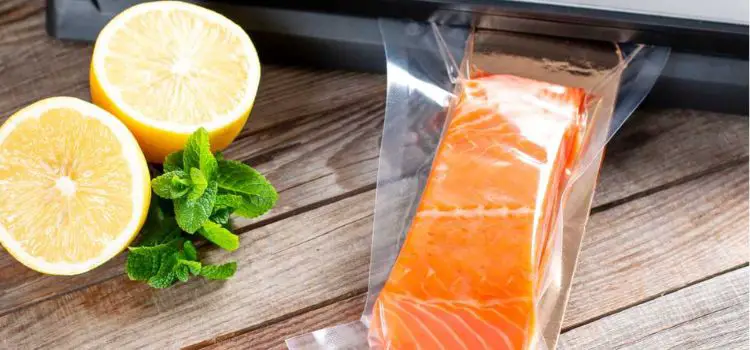As an Amazon Associate, I earn from qualifying purchases

Vacuum sealing has revolutionized the way we store and preserve food, offering a convenient method to extend the shelf life of various products. This technology has gained immense popularity, especially for preserving seafood like tuna, which is known for its delicate nature and susceptibility to spoilage. By removing air from the packaging, vacuum sealing helps maintain the freshness and quality of tuna, making it a favored choice for both home cooks and professional chefs.
Tuna, whether raw or cooked, benefits significantly from vacuum sealing. This method not only prolongs its shelf life but also preserves its flavor and texture, ensuring that you can enjoy delicious, high-quality tuna even days after purchase. But how long does vacuum-sealed tuna actually last in the fridge? In this article, we’ll explore the factors that affect its shelf life, recommended storage times, signs of spoilage, and tips for maximizing freshness.
Factors Affecting the Shelf Life of Vacuum-Sealed Tuna
Several factors influence how long vacuum-sealed tuna can last in the fridge. Understanding these can help you make informed decisions about storage and consumption:
- Quality and Freshness of Tuna Before Sealing: The initial quality of the tuna plays a crucial role in determining its shelf life. Fresh, high-quality tuna will naturally last longer than tuna that is nearing its expiration. Always ensure that the tuna is fresh before vacuum sealing to maximize its storage potential.
- Storage Conditions: Proper storage conditions are essential for maintaining the quality of vacuum-sealed tuna. The temperature of your fridge should be consistently below 40°F (4°C) to prevent bacterial growth. Additionally, placing the tuna in the coldest part of the fridge, away from the door, can help maintain a stable temperature.
- Seal Integrity and Bag Quality: The effectiveness of vacuum sealing depends on the integrity of the seal and the quality of the bag used. Any compromise in the seal can allow air and moisture to enter, leading to spoilage. It’s important to use high-quality vacuum seal bags and ensure that the seal is tight and secure.
Recommended Storage Times
While vacuum sealing extends the shelf life of tuna, it’s important to adhere to recommended storage times to ensure safety and quality:
- General Guidelines: Vacuum-sealed raw tuna can typically last in the fridge for about 5 to 8 days. Cooked tuna, on the other hand, may last slightly longer, up to 10 days, due to the cooking process that reduces bacterial presence.
- Differences in Storage Time for Cooked vs. Raw Tuna: The storage time can vary depending on whether the tuna is raw or cooked. Cooked tuna is less prone to spoilage, allowing for a longer storage period. However, it’s crucial to monitor both for any signs of spoilage, regardless of their state.
Signs of Spoilage

Recognizing the signs of spoilage is vital to ensure that the tuna is safe to consume. Here are some indicators to watch for:
- Visual Indicators: Discoloration, such as a dull or brownish hue, can indicate spoilage. Additionally, the presence of mold or any unusual spots on the tuna is a clear sign that it should not be consumed.
- Odor Changes and Texture Alterations: Fresh tuna should have a mild, ocean-like smell. A strong, fishy odor is a warning sign of spoilage. Similarly, changes in texture, such as a slimy or mushy feel, suggest that the tuna is no longer fresh.
- Importance of Checking for Seal Integrity: Regularly inspect the vacuum seal for any signs of compromise. If the seal is broken or the bag is puffed up, it’s likely that air has entered, and the tuna may be spoiled.
Tips for Maximizing Freshness
To ensure that your vacuum-sealed tuna remains fresh for as long as possible, consider these tips:
- Best Practices for Handling and Storing Vacuum-Sealed Tuna: Handle the tuna with clean hands and utensils to prevent contamination. Store it in the coldest part of the fridge and avoid frequent temperature fluctuations.
- Using Airtight Containers or Additional Sealing for Extra Protection: For added protection, place the vacuum-sealed tuna in an airtight container. This can help prevent any potential leaks and protect the tuna from other odors in the fridge.
- Importance of Labeling and Dating Packages: Always label and date your vacuum-sealed tuna packages. This practice helps you keep track of storage times and ensures that you consume the tuna while it’s still fresh.
Conclusion
Vacuum sealing is an effective method for preserving the freshness and quality of tuna, extending its shelf life in the fridge. By understanding the factors that affect its longevity and following recommended storage practices, you can enjoy delicious, safe-to-eat tuna for days after purchase. Always be vigilant for signs of spoilage and adhere to storage guidelines to ensure the best culinary experience.
In summary, while vacuum-sealed tuna can last longer than traditionally stored tuna, it’s essential to prioritize safety and quality. With the right approach, you can make the most of this preservation method and savor the delightful taste of tuna whenever you desire.
FAQ
How long does vacuum-packed tuna last?
Vacuum-packed tuna can last in the fridge for about 5 to 8 days, depending on its initial freshness and storage conditions. The vacuum seal helps preserve its quality by limiting exposure to air and bacteria, but it’s crucial to monitor for spoilage signs, like odor or discoloration.
How long can vacuum-sealed fish last in the fridge?
Vacuum-sealed fish generally lasts 5 to 7 days in the fridge, extending its shelf life compared to non-sealed storage. The absence of air slows bacterial growth, maintaining freshness. However, check for spoilage indicators such as off-smells or texture changes to ensure safety before consumption.
How long can raw tuna stay in the fridge?
Raw tuna can stay in the fridge for about 1 to 2 days if not vacuum-sealed. Proper storage in airtight packaging helps maintain its freshness, but it’s best consumed quickly to prevent spoilage. For longer storage, consider freezing to preserve quality and safety.
As an Amazon Associate, I earn from qualifying purchases